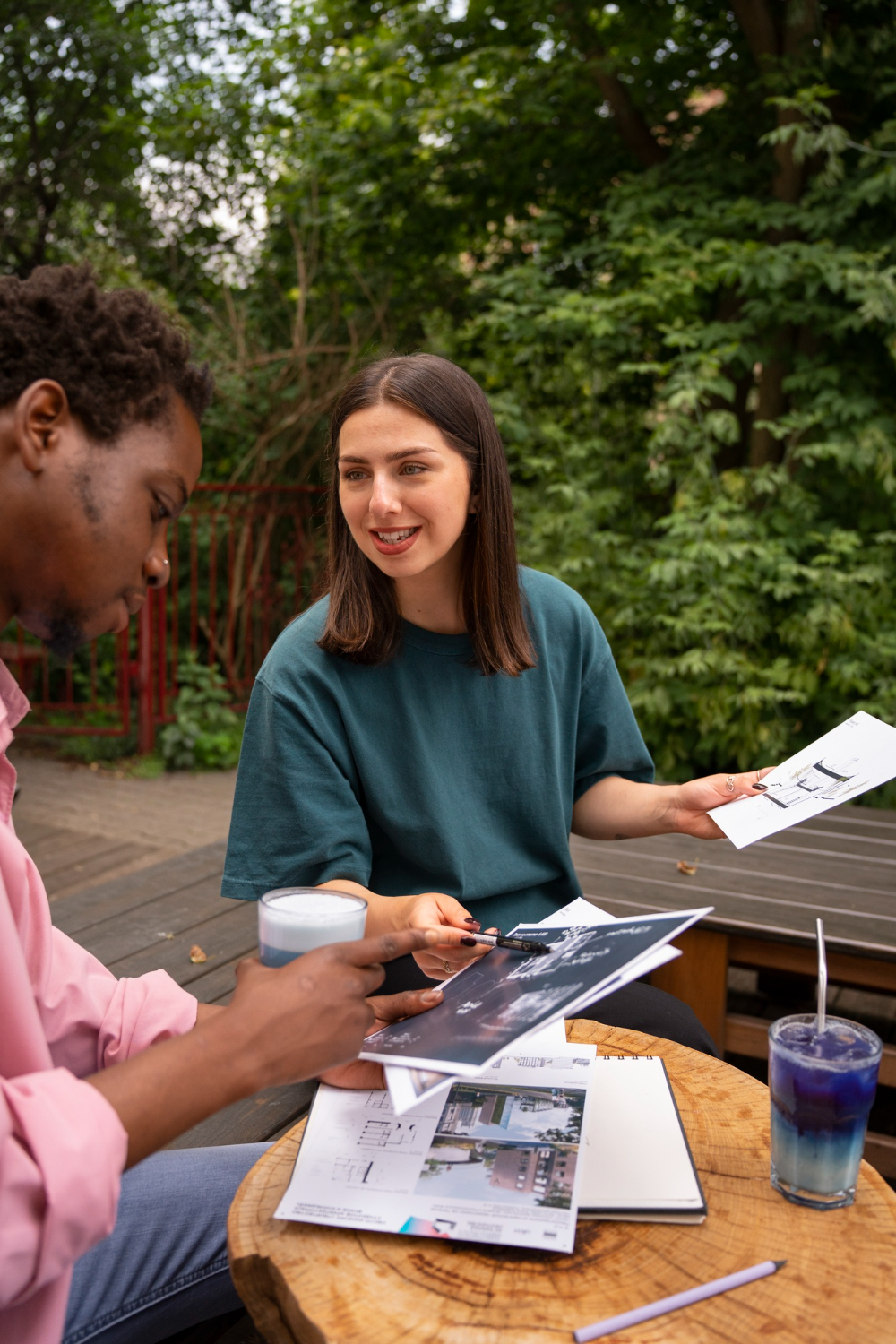
Mündliche Prüfung Klasse 10 - Bildbeschreibung (MSA)


Background information
Use the following text as background information on the topic of your picture description. Carefully read the text and mark or write down any relevant information.
Overview of Martin Luther King Jr.
Martin Luther King Jr. (MLK) was a Baptist minister and social activist who played a pivotal role in the American civil rights movement from the mid-1950s until his assassination in 1968. He is renowned for his advocacy of nonviolent resistance to racial discrimination and his significant impact on race relations in the United States. This overview aims to provide key information about Martin Luther King Jr., including his early life, major achievements, and lasting legacy, to help German students in the 10th grade prepare for their oral exams.
Early Life
Born on January 15, 1929, in Atlanta, Georgia, Martin Luther King Jr. was originally named Michael King Jr. He came from a comfortable middle-class family deeply rooted in the tradition of the Southern Black ministry. His father, Martin Luther King Sr., was a Baptist preacher, and his maternal grandfather had also been a pastor. King's parents were both college-educated, and he grew up in a loving and supportive extended family.
Despite this secure upbringing, King experienced the harsh realities of racial segregation in the South from a young age. One significant incident occurred when he was around six years old, and a white playmate informed him that they could no longer play together because they were attending segregated schools. This early encounter with racial prejudice left a lasting impression on him.
In 1944, at the age of 15, King entered Morehouse College in Atlanta under a special wartime program that admitted promising high school students. Before starting college, he spent a summer working on a tobacco farm in Connecticut, where he was shocked by the relatively peaceful race relations compared to the segregated South. This experience deepened his growing hatred of racial segregation.
Education and Influences
King initially considered studying medicine or law but decided to enter the ministry in his senior year at Morehouse College, influenced by the college president, Benjamin Mays, a social gospel activist. Mays' speeches and ideas about fighting racial inequality left a significant impact on King. He graduated from Morehouse in 1948 and went on to attend Crozer Theological Seminary in Pennsylvania, where he became acquainted with the philosophy of nonviolence espoused by Mohandas Gandhi.
King earned a bachelor of divinity degree from Crozer in 1951 and was elected president of the predominantly white student body, showcasing his exceptional oratorical skills and leadership qualities. He then pursued a doctorate at Boston University, where he studied theology and ethics, receiving his Ph.D. in 1955.
Major Achievements
King's leadership in the civil rights movement began in earnest with the Montgomery Bus Boycott in 1955. The boycott was sparked by Rosa Parks' arrest for refusing to give up her bus seat to a white person. King's role in organizing the boycott brought him national prominence and marked the beginning of his commitment to nonviolent protest.
In 1957, King co-founded the Southern Christian Leadership Conference (SCLC), an organization dedicated to achieving civil rights through nonviolent means. He traveled extensively, giving speeches and organizing peaceful protests. One of his most famous actions was the March on Washington for Jobs and Freedom in 1963, where he delivered his iconic "I Have a Dream" speech. This speech, advocating for racial equality and an end to discrimination, remains one of the most powerful and enduring speeches in American history.
King's efforts were instrumental in the passage of the Civil Rights Act of 1964 and the Voting Rights Act of 1965, two landmark pieces of legislation that significantly advanced civil rights in the United States. In recognition of his tireless work, King was awarded the Nobel Peace Prize in 1964.
Legacy
Martin Luther King Jr.'s legacy extends far beyond his lifetime. His advocacy for nonviolent resistance and his powerful rhetoric continue to inspire movements for social justice around the world. Tragically, King was assassinated on April 4, 1968, in Memphis, Tennessee, but his vision for a more just and equitable society lives on.
In the years following his death, King became a symbol of the American civil rights movement, and his contributions were commemorated with the establishment of Martin Luther King Jr. Day, a federal holiday observed on the third Monday of January each year. Monuments and memorials, such as the Martin Luther King Jr. Memorial in Washington, D.C., honor his life and work.
Conclusion
Martin Luther King Jr. was a visionary leader whose commitment to nonviolent resistance and racial equality left an indelible mark on American society. His life's work helped dismantle institutionalized segregation and inspired future generations to continue the fight for civil rights. Understanding King's contributions and legacy is essential for students preparing for their oral exams, as it provides valuable insights into the history and ongoing struggle for social justice in the United States.

Guide to describing a picture
Carefully read the following guide to describing a picture step-by-step.
Guide to Describing a Picture in English Class
Introduction:
When describing a picture in English, it is important to not only focus on what is visible, but also to bring in your background knowledge and relate it to the picture. This helps demonstrate your understanding of cultural, historical, and contextual elements which are an essential part of the exam.
Step-by-Step Guide:
1. Initial Observation:
- Start with a General Overview: Describe what you see in the picture in general. Mention the setting, the main subjects, and the overall impression.
- Example: "The picture shows a busy city street during the day with many people walking and a few cars on the road."
2. Detailed Description:
- Focus on Specific Elements: Describe the main parts of the picture in more detail. This includes people, objects, and actions.
- Example: "In the foreground, there is a woman pushing a stroller. To the left, a group of teenagers is gathered around a street performer who is playing the guitar."
3. Contextual and Background Knowledge:
- Historical/Cultural Context: Relate the picture to relevant historical or cultural knowledge. This is a critical part of the exam as it shows your understanding of the broader context.
- Example: "This scene could be set in a Western city, possibly during the early 21st century, given the modern clothing and vehicles. The presence of a street performer is typical in many urban areas where public performances are part of the local culture and entertainment."
4. Interpretation:
- Analyze the Picture: Offer an interpretation of what is happening and why it might be significant. Use your background knowledge to support your interpretation.
- Example: "The people seem to be in a hurry, which might indicate it is a weekday morning. This suggests that the city is in a country with a strong work ethic where people are heading to their jobs."
5. Personal Reaction and Reflection:
- Express Your Own Views: Share your personal reaction to the picture and reflect on the emotions or thoughts it evokes. This will show your ability to engage with the material on a deeper level.
- Example: "This picture reminds me of my visit to Berlin, where the streets were always bustling with activity. It makes me think about the importance of public spaces in urban life and how they bring together people from different walks of life."
6. Connecting to Broader Themes:
- Relate to Larger Issues: Connect the picture to broader themes or issues such as social dynamics, environmental concerns, or technological advancements.
- Example: "The image also raises questions about urbanization and its impact on the environment. The number of cars suggests a reliance on fossil fuels, which is a significant issue in modern cities dealing with pollution and climate change."
Practice and Preparation:
- Practice Descriptions: Regularly practice describing different pictures using this guide.
- Expand Your Knowledge: Read up on cultural, historical, and social contexts of English-speaking countries to enhance your background knowledge.
- Seek Feedback: Share your descriptions with teachers or peers to get feedback and improve.
By following these steps and emphasizing the importance of contextual and background knowledge, you will be well-prepared to describe pictures effectively in your English exams.
Key Points to Remember:
- Always start with a general overview.
- Provide detailed descriptions of specific elements.
- Incorporate historical and cultural context.
- Offer interpretations based on your background knowledge.
- Share your personal reactions and reflections.
- Connect the picture to broader themes and issues.
Good luck with your studies and your exams!

Grammar
Remember that picture descriptions are done in present progressive. However, change the tense accordingly for talking about background information on the picture.

Vocabulary
Use the following list of vocabulary as a help for your picture description.
Vocabulary list for picture descriptions
positions:
in front of - vor
behind - hinter
next to - neben
between - zwischen
on the left - links
on the right - rechts
in the middle - in der Mitte
at the top - oben
at the bottom - unten
near - in der Nähe
far from - weit weg von
above - über
below - unter
in the background - im Hintergrund
in the foreground - im Vordergrund
others:
to describe - beschreiben
to show - zeigen
to indicate - anzeigen
to appear - erscheinen
to look like - aussehen wie
to seem - scheinen
to illustrate - veranschaulichen
to represent - darstellen
to point out - hinweisen auf
to focus on - sich konzentrieren auf
to capture - einfangen

Picture
Now look at the following image in detail and take notes. You should write down anything that you notice about what's shown in the picture and what kind of background information will be important for your description.

Notes

Practising the picture description
Use your notes as well as the vocabulary introduced in the worksheet and start practising your picture description. Try talking for about 5 minutes.
Once you're quite confident with your talk, present your picture description to your partner. They will fill out the feedback sheet below and give you feedback on what you did well and what you can still improve upon.
| Aspect | Yes/No | Ideas for Improvement |
|---|---|---|
| Introduction |
||
| Detailed picture description Present progressive Vocabulary |
||
| Context Detailed background information Interpretation |
||
| Conclusion |
Sample solution - text and audio file
In the picture I am describing, a man and a woman are standing closely together at the center of a lively scene. The man appears to be middle-aged and is wearing a dark suit with a white shirt and a patterned tie. On his head, he is wearing a light-colored fedora hat that contrasts with his suit. His face is lit up with a broad smile, showing his teeth, and his eyes are sparkling with joy. The woman beside him is embracing him warmly and is planting a kiss on his cheek. She is wearing a light-colored coat that falls below her waist and a decorative hat with a bow. Her hair is styled in gentle waves that frame her face. She is also smiling, and her eyes are closed as she expresses affection.
Around them, there is a crowd of people who are gathered closely. The people are dressed in formal or semi-formal clothing typical of the mid-20th century. Men are wearing suits and hats, and women are dressed in coats and hats as well. Many faces are visible in the crowd, and most of them are smiling or laughing. Some individuals are clapping their hands or raising their arms in celebration. The expressions on their faces show excitement and happiness, and they all seem to be sharing in a joyful moment.
In the background, there is a large building with a stone façade and several windows. The architecture suggests that it might be a significant or official building. The scene appears to be taking place outdoors, perhaps in front of this building or on its steps. The weather seems pleasant, as there are no signs of rain or harsh conditions affecting the people in the picture.
The photograph is in black and white, which highlights the contrast between the dark clothing and the lighter elements like faces and coats. The use of black and white also adds a timeless quality to the image. Shadows and light are well-balanced, giving depth to the scene and drawing attention to the main subjects in the center.
In the lower left corner of the picture, a newspaper is partially visible in someone's hand. The text on the newspaper is not clear, but its presence hints at the importance of current events at the time. The overall mood of the picture is celebratory and filled with positive energy. The people seem united in their happiness, and the atmosphere is one of shared excitement.
Based on my background knowledge, the man in the picture is Martin Luther King Jr., a prominent leader in the American civil rights movement during the mid-1950s until his assassination in 1968. He was born on January 15, 1929, in Atlanta, Georgia, and was originally named Michael King Jr. Coming from a family deeply rooted in the Black Baptist ministry, he became a Baptist minister himself and a social activist.
The woman embracing him is his wife, Coretta Scott King. She was a significant partner in his work and continued his legacy after his death. Martin Luther King Jr. is renowned for his advocacy of nonviolent resistance to racial discrimination and played a crucial role in advancing civil rights in the United States. He was instrumental in events like the Montgomery Bus Boycott in 1955, which began after Rosa Parks was arrested for refusing to give up her seat to a white person.
His leadership and commitment to nonviolent protest led to significant achievements, including the passage of the Civil Rights Act of 1964 and the Voting Rights Act of 1965. In 1964, he was awarded the Nobel Peace Prize for his efforts in combating racial inequality through nonviolent means.
Interpreting the picture, it seems to capture a moment of triumph and relief for Martin Luther King Jr. and Coretta Scott King. The joyful expressions on their faces and the affectionate embrace suggest that they are celebrating a significant victory or milestone in the civil rights movement. The enthusiastic crowd around them, sharing in their happiness, indicates that this moment is important not only for them but also for the community they represent.
The presence of the newspaper hints at recent news, possibly announcing a successful outcome of a protest, a favorable court decision, or the passing of important legislation. The setting in front of a grand building might suggest that this event took place at a courthouse or another significant location related to their activism.
The black and white nature of the photograph emphasizes the historical context and adds a sense of gravity to the moment. It highlights the enduring impact of their work and the struggles they faced during that time.
In conclusion, the picture portrays a powerful and joyful moment shared between Martin Luther King Jr. and his wife, surrounded by a supportive and excited crowd. It symbolizes a triumph in their ongoing fight for civil rights and equality. The image reflects themes of love, unity, and collective achievement. It serves as a reminder of the progress made during the civil rights movement and the lasting legacy of Martin Luther King Jr.'s dedication to nonviolent change.
Zielsetzung: Die Schüler:innen trainieren die Beschreibung und Analyse von Bildern, um ihre mündliche Ausdrucksfähigkeit und ihr Präsentationsvermögen für die Abschlussprüfung zu stärken.
Inhalte und Methoden: Die Schüler:innen erhalten ein Bild und lernen eine strukturierte Herangehensweise zur Beschreibung und Analyse. Sie beginnen mit einer allgemeinen Einleitung, gefolgt von einer detaillierten Beschreibung des Bildinhalts. Anschließend interpretieren sie das Bild und äußern ihre persönliche Meinung. Zur Unterstützung werden Redemittel und Satzstrukturen bereitgestellt.
Kompetenzen:
- Strukturierte Bildbeschreibung auf Englisch
- Erweiterung des thematischen Wortschatzes
- Argumentative und reflektierte Bildinterpretation
- Flüssiges, sicheres Sprechen in Prüfungssituationen
Zielgruppe und Niveau: (Mündliche) Abschlussprüfung der Klasse 10 (ZP10, MSA, Mittlere Reife) im Fach Englisch.
Export
Download als .pdf Datei
Perfekt für das Klassenzimmer.
Download als .docx Datei
Perfekt um damit weiterzuarbeiten.

Download als .h5p Datei
Perfekt für jedes LMS oder digitale Plattformen.
Teile das Arbeitsblatt
Teile das Arbeitsblatt mit deinen Schüler:innen.
